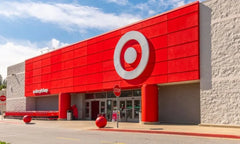
Amazon's $4 Billion Rural Delivery Expansion: A Game Changer for Small-Town America
Table of Contents
- Key Highlights
- Introduction
- The Context of Rural E-Commerce
- Amazon's Strategic Expansion Plans
- Implications for Rural Consumers
- Amazon vs. Tractor Supply: A Closer Look
- The Future of Rural E-Commerce
- Conclusion
- FAQ
Key Highlights
- Amazon is investing over $4 billion to enhance its delivery network, aiming to provide same- and next-day delivery to more than 4,000 small towns and rural communities across the U.S. by the end of 2025.
- The move represents a strategic challenge to established retailers like Tractor Supply, which have traditionally dominated rural markets.
- Early feedback from communities already benefiting from this enhanced delivery service has been overwhelmingly positive, indicating a significant shift in shopping habits for rural consumers.
Introduction
In a bold move that could reshape shopping for millions of rural Americans, Amazon has announced plans to invest more than $4 billion in expanding its delivery network to serve over 4,000 small towns and rural communities by the end of 2025. This initiative not only reflects Amazon's commitment to reaching underserved areas but also poses a direct challenge to established players like Tractor Supply. Recent trends indicate that as logistics providers retreat from rural markets due to high costs, Amazon is capitalizing on this gap, promising faster delivery options that could redefine consumer behavior in these regions.
The Context of Rural E-Commerce
Historically, rural communities have faced challenges in accessing a wide variety of goods and services, often relying on local stores that may not offer the same selection or prices as larger retailers. The COVID-19 pandemic accelerated the shift toward e-commerce, revealing significant disparities in service quality between urban and rural areas. With many logistics companies scaling back their operations in less profitable regions, Amazon's investment comes at a pivotal moment, aiming to fill this void and cater to an emerging consumer base that increasingly seeks the convenience of online shopping.
Amazon's Strategic Expansion Plans
Investment Overview
Amazon's commitment to invest over $4 billion by 2026 is a significant step. The company plans to enhance its logistics infrastructure to enable same- and next-day delivery in rural areas that previously lacked such services. This includes building new fulfillment centers and expanding existing operations to ensure that more customers can receive their orders quickly and efficiently.
Early Successes
Early results from the pilot programs in over 1,000 smaller cities and towns have shown promising outcomes. Communities where these services have been launched report high satisfaction levels, with residents appreciating the newfound access to products that were previously difficult to obtain without long journeys to larger towns or cities.
Competitive Landscape
This expansion inevitably brings Amazon into direct competition with Tractor Supply, a retailer that has long been the go-to for rural consumers seeking agricultural products, home improvement supplies, and outdoor goods. Tractor Supply has also been enhancing its logistics capabilities, recently announcing upgrades to its fulfillment processes, including the introduction of same-day delivery from its stores.
Implications for Rural Consumers
Changing Shopping Habits
As Amazon ramps up its delivery capabilities, the implications for rural consumers are profound. The convenience of receiving packages within a day or two could lead to a shift in shopping habits, encouraging more people to choose online shopping over traditional in-store experiences. This shift could potentially affect local businesses that have relied on consistent foot traffic.
Local Business Impact
While many rural residents will welcome the options that Amazon provides, there's concern about the impact on local businesses. Retailers like Tractor Supply offer not just products but also a sense of community and local support. The competitive pressure from Amazon may force these businesses to adapt by improving their own services or reducing prices, which could lead to a healthier market overall but might also threaten their viability in the long term.
Amazon vs. Tractor Supply: A Closer Look
The competition between Amazon and Tractor Supply is not just about delivery times; it also encompasses pricing, product availability, and customer loyalty. Tractor Supply has built a reputation for catering to the specific needs of rural customers, including providing specialized products that may not be readily available from Amazon.
Customer Loyalty
Tractor Supply's loyal customer base is often linked to the broader lifestyle it supports—farming, gardening, and rural living. These customers may prefer to shop in-store for larger items or specialized tools, which may not be as easily shipped or returned through e-commerce channels. However, if Amazon can offer competitive pricing on Tractor Supply's best-selling items, it might sway some customers to explore the convenience of online shopping.
Expert Insights
Jonathan Matuszewski, an analyst at Jefferies, emphasized that Amazon's strategic push is directly targeting Tractor Supply's customer base. He noted that while Tractor Supply has a strong market presence, the allure of quicker delivery options from Amazon could entice customers to rethink their shopping habits, particularly for non-bulky items that are easy to ship.
The Future of Rural E-Commerce
As Amazon's investment unfolds, the landscape of rural e-commerce is likely to evolve rapidly. With logistics improvements and expanded delivery options, consumers in rural areas may experience a transformation in how they shop. The following trends may define the near future:
Increased Accessibility
With enhanced delivery services, rural consumers will have greater access to a wider range of products, making it easier for them to purchase items that were previously difficult to find. This accessibility can lead to increased consumer spending in these communities, which could positively impact local economies.
Potential Partnerships
Amazon's strategy may also involve partnerships with local businesses, allowing them to tap into Amazon's logistics network while maintaining their customer base. This could create a win-win scenario where local retailers benefit from increased visibility and sales, while Amazon broadens its reach.
Adaptation of Local Retailers
Local retailers, including Tractor Supply, may need to innovate and adapt to this new competitive landscape. This could involve enhancing their online presence, improving in-store experiences, or finding unique ways to differentiate themselves from e-commerce giants.
Conclusion
Amazon's $4 billion investment in rural delivery services represents a significant shift in the retail landscape for small-town America. By prioritizing underserved areas and challenging established retailers, Amazon aims to redefine the shopping experience for millions of rural consumers. While the expansion offers exciting new opportunities for consumers, it also raises important questions about the future of local businesses and the balance between convenience and community support. As this competition unfolds, both Amazon and traditional retailers will need to navigate the evolving expectations of their customers while ensuring that rural communities continue to thrive.
FAQ
What is Amazon's plan for rural delivery?
Amazon aims to invest over $4 billion to enhance its delivery network, providing same- and next-day delivery to more than 4,000 small towns and rural communities by the end of 2025.
How will this impact local businesses like Tractor Supply?
While Amazon's expansion could offer greater convenience for consumers, it may also increase competition for local retailers like Tractor Supply, which have traditionally served these communities.
What are the expected benefits for rural consumers?
Rural consumers can expect faster access to a wider variety of products, improved shopping convenience, and potentially lower prices due to increased competition.
How has the response been from communities already benefiting from Amazon's delivery services?
Early feedback from over 1,000 small towns where Amazon's delivery services have been implemented has been very positive, with residents appreciating the quicker access to goods.
What strategies might local retailers adopt in response to Amazon's expansion?
Local retailers may enhance their online presence, improve in-store experiences, and explore partnerships to compete effectively against e-commerce giants like Amazon.
Power your ecommerce with our weekly insights and updates!
Håll dig uppdaterad om vad som händer i handelsvärlden
E-postadress



